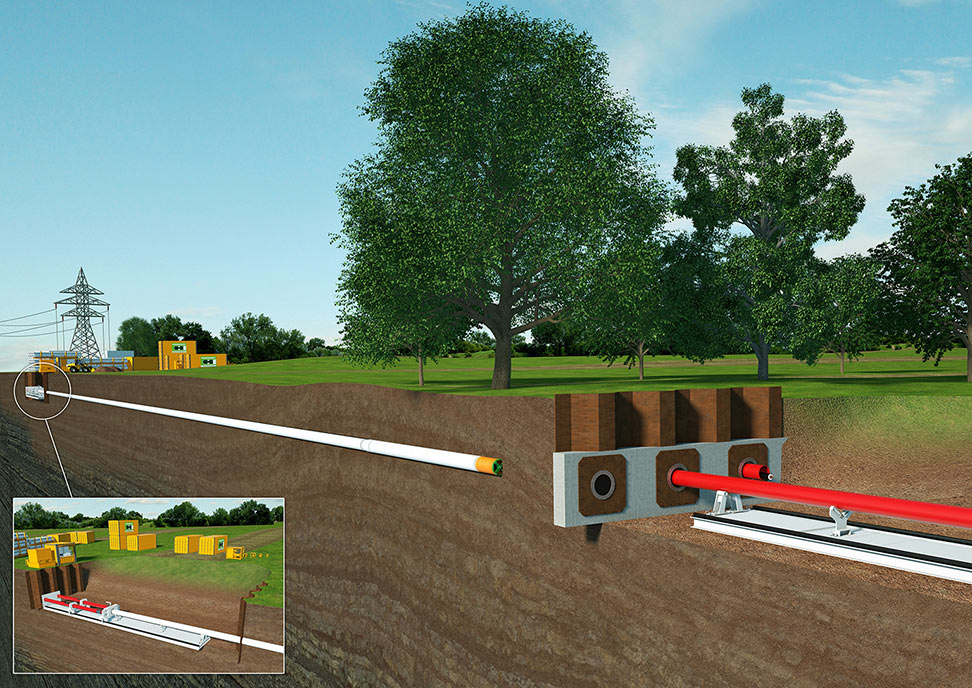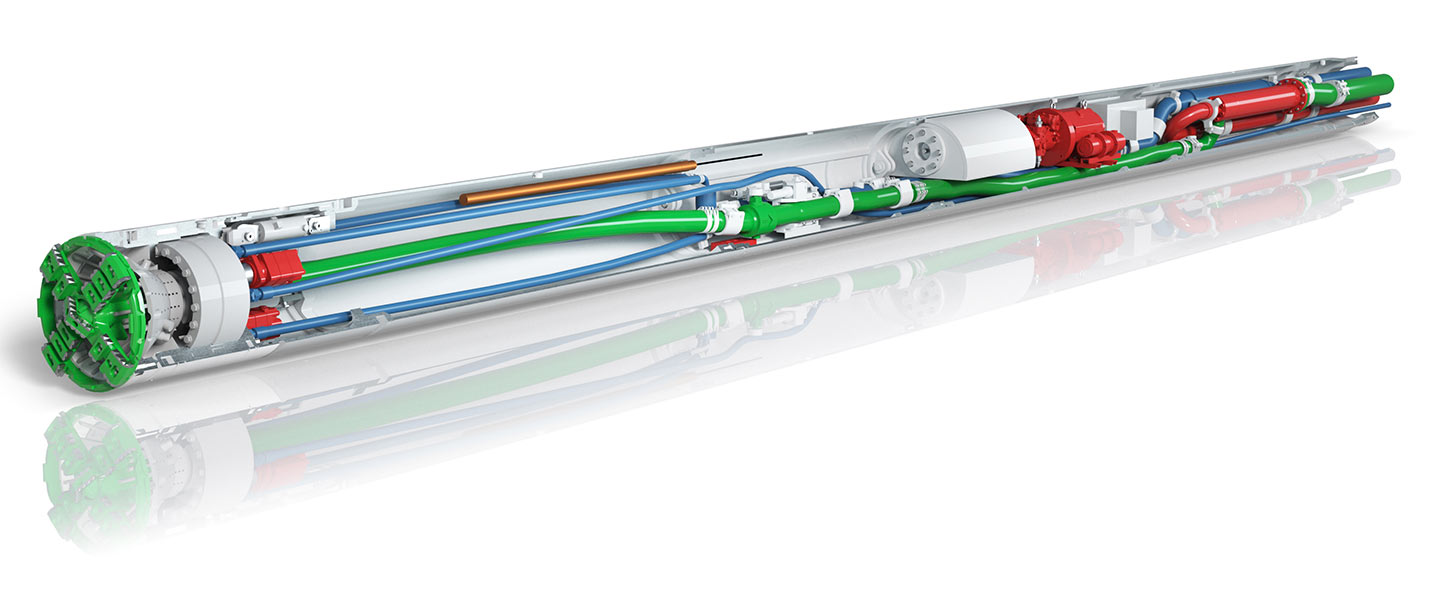Efficient and economical installation of new pipelines 21 Feb 2019
There are more than 3 million kilometres of pipelines worldwide that keep industry going and each year Herrenknecht equipment adds another 380km of new pipelines using specialist technology that allows direct installation without the need for prior excavation and often in difficult ground conditions. Direct Pipe combines the advantages of microtunnelling and horizontal directional drilling technology in a single step, with the prefabricated pipeline installed while excavating the borehole at the same time.
Recent examples of projects using the technology include the modernisation of a wastewater treatment plant in Auckland, New Zealand, where a Herrenknecht Direct Pipe project set a record as it bored 1,930m through the subsoil into the sea. In Paris, an existing gas pipeline was replaced and lowered by 8m to allow for the widening and deepening of a canal parallel to the River Oise to accommodate larger vessels. The 250m long x 18m deep river crossing was successfully completed in one week using a hybrid Herrenknecht rig, powered by both a diesel engine and an electric motor. In Zevenbergen in the Netherlands, a slant Directional Drilling (SDD) system was used to install enerage exchange boreholes to heat multiple greenhouses. The SDD system was employed to drill shallow entry angles of between 8 and 90 degrees were involved.
To install underground cables, Herrenknecht has developed the trenchless E-Power Pipe system that has been nominated for the bauma Innovation Award 2019 in the Machine category. This trenchless technology allows small diameter drives with ten times greater lengths, shallower depths and higher precision and speed, to quickly and securely install small-diameter cable protection pipes underground over distances of more than a kilometre. The TBM used for this installation is fully remotely controlled, has an excavation diameter of 505mm and is designed for drive lengths of more than 1,000m. It can keep to the planned alignment with high precision to safely underpass existing infrastructure such as pipelines, roads, railways or smaller bodies of water. Individual boreholes can be placed 1m to 2m apart so that several lines can be installed in parallel.
The machine has a jet pump and integrated hydraulic power unit to assist muck transport over longer distances, allowing this method to be used where previously space restrictions and limited drive lengths were a problem. Now distances of up to 10 times longer can be realized at high speeds in the small diameter range.
To perform the E-Power Pipe method, a newly developed push and pull unit is installed to start the excavation and its thrust is used to push the jacking pipes and TBM along the specified route in the direction of the target point. The borehole remains securely supported by the machine and the jacking pipes. After breakthrough, the TBM is separated from the jacking pipes and the prefabricated cable protection pipe is connected to the jacking pipes still located in the borehole and pulled back into the borehole by the push and pull unit in the launch shaft at the other end. Final insertion of the cables is then carried out by specialised companies.
The new push and pull unit developed by Herrenknecht has a 10m stroke and a push and pull force of 350 tonne with technology based on a rack and pinion guide powered by electric motors. Higher installation performance and greater acceptance is achieved thanks to lower noise emissions. Ground movement is also reduced as the surface and soil structure is left largely untouched and there is little use of construction machinery and trucks.
During pilot projects daily best performances of 184m were achieved for pipeline excavation and 266m for the protective pipe installation. Cevelopment of the method as the IBoTec section of the BMWi research project received funding from the German Federal Ministry of Economics and Energy and was carried out by Herrenknecht in cooperation with Amprion with RWTH Aachen.
In Germany, planned expansion of the high voltage electricity power grid, with a total investment of about €50 billion, including offshore reaches, requires 3,050km of grid reinforcement on existing lines and around 2,400km of new high voltage direct current transmission lines, which are primarily to be installed as underground cables. Performing the work with E-Power Pipe allows time and labour savings.
References
- Final double breakthrough at Emscher sewer – TunnelTalk, August 2017
- Direct Pipe installation first for Poland – TunnelTalk, February 2017
- Super-fast pipe installation in Sweden – TunnelTalk, April 2015
- Canada debut for microtunnelling system – TunnelTalk, January 2014
|
|
|
|
|
Add your comment
- Thank you for taking the time to share your thoughts and comments. You share in the wider tunnelling community, so please keep your comments smart and civil. Don't attack other readers personally, and keep your language professional.





